There are few things that I am more proud of in my house than my pantry, and I’m sure many of you feel the same way. After bending over backwards to stockpile the essentials for when SHTF, it’s our pride and joy to see them neatly piled and knowing that if anything happens we won’t starve to death, nor will we rely on the supermarkets to feed ourselves and our families.
That’s why we’ve written some previous articles about the enemies of your stockpile and how to keep pests away from it. Now we’d like to share some of the best tips that we have to offer: knowing which foods will go a long way, even if the grid goes down and there’s no electricity to keep them cold.
I’m not talking here about preserving food by dehydration or canning; I’m talking about foods that will never go bad exactly as they are.
What’s simpler than buying, say, a jar of honey, and knowing that all you have to do is keep it in a cool, dry place and you’ll have it forever? Yeah, that’s right, I said forever! And honey is not the only item that will keep indefinitely. Read further to find out what other foods you can keep forever without fear of spoilage.
1. Honey. As I mentioned above, it only needs to be kept in a sealed container in a cool, dry place and it will last a lifetime. Did you know that honey was found in Egyptian pharaohs’ tombs and it was still as good as new? And don’t fret if your honey has crystalized; just place the jar in some warm water (without letting water enter the jar) and it will be smooth and good as new in no time.
Besides having great nutritional value, honey also has a lot of uses as a natural remedy, which we wrote about here and here, so it makes sense to include it in your stockpile as a multipurpose item.
2. Salt. An essential supplement in any diet, salt is also useful as a natural remedy and is a multipurpose household item.
It keeps well in cool, dry places and you can prevent it from clumping by dropping a few grains of rice at the bottom of the shaker.
3. Rice. Speaking of rice, it’s also one of the foods that, if kept in a cool dry place, will last forever. You will also want to make sure no bugs get to it; that’s why it’s best to keep it in air tight containers. The exception is brown rice which has a higher oil content than other rice and will therefore spoil eventually.
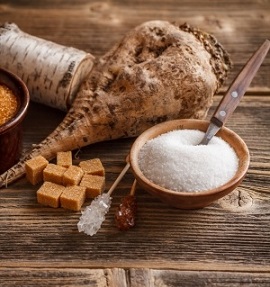
Any type of sugar will keep well in an air tight container, away from bugs and high humidity, but it might eventually become solid pieces. No need to worry though; a few hammer smacks will solve the problem for you! And you can learn to DIY in our article, here.
5. Maple Syrup. Just like honey, maple syrup’s high sugar content keeps it from ever spoiling. Keep it in a cool, dry place in an air tight container or freeze it and it will be good to go whenever you need to top your pancakes with streams of deliciousness. It might develop a bit of mold on top, but all you have to do is clean as much as you can off with a spoon and then boil the syrup to make sure you killed it all.
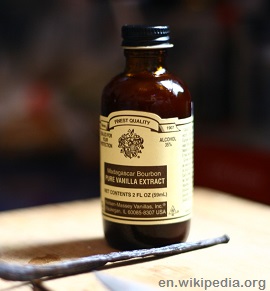
7. Hard Liquor. Vodka, rum, whiskey, gin, tequila and similar liquors will last forever if bottles are kept unopened and out of heat and sunlight. They might lose a bit of flavor, but it will take a long time before you notice that. Plus they will make for great disinfectants when SHTF.
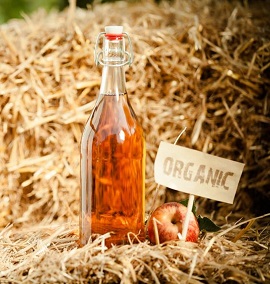
They are staples in the kitchen but they are also great multipurpose items. Plus you can learn how to make your own organic apple cider vinegar from our article, here.
9. Cornstarch. You usually don’t get to use a lot of cornstarch shortly after opening it, but there’s no need to worry: it won’t ever spoil as long as you store it correctly. Keep it in air tight containers in a cool, dry place and you’ll be able to use it for a long time. It’s great to use as a thickener.
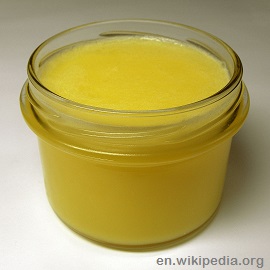
Stored correctly it can last for centuries. It has been discovered in tombs and it was totally edible. You can learn how to make butter here, then all you have to do is cook it to make ghee, seal it in jars and enjoy it a hundred years from now!
11. Soy Sauce. It has a high salt content so that’s what keeps it from spoiling, though it will lose flavor after a very long period of time. Keep it in a cool, dry place and it will be a lovely addition to an otherwise not-so-special meal when things go south.
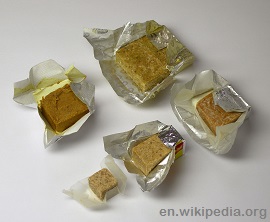
They will elevate a plain meal to something more palatable in no time and they will keep well for a really long time. Just make sure to keep them in a cool and especially dry place, since humidity will affect their flavor and stability.
13. Corn Syrup. Though it has a bad reputation, corn syrup does have a plus: it keep forever. So keep it in the right conditions (cool and dry) and it will be a great sweetening option when sugar and honey may be limited.
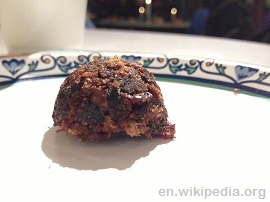
15. Powdered Milk in Nitrogen-Packed Cans. In an emergency situation it will make for an excellent source of calcium and vitamin D and it will last for years when stored correctly so that the cans are not damaged by humidity or heat.
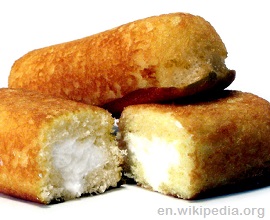
There are a few other items that will keep really well for a long time, though they will lose their flavor considerably or spoil eventually. Dried spices, beans, tea leaves and dried pasta are some of them, and they should be considered stockpile essentials due to their considerably high shelf life. Spices and tea may also have tremendous value as barter items, too.
If we’ve missed any food that you know will never spoil or that has an exceptionally long shelf life, make sure to complete our list in the comments section below.
This article has been written by Brenda E. Walsh for Survivopedia.


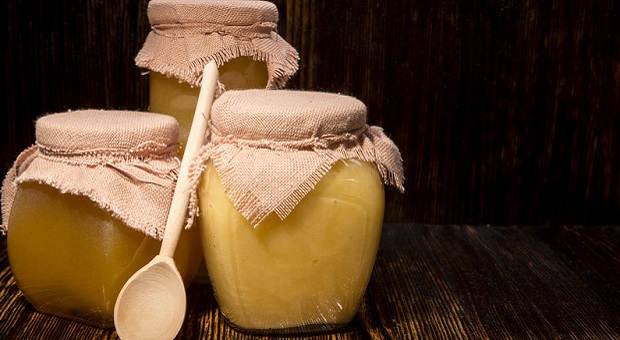







maggi | June 22, 2015
|
good post. I am interested in making ghee. now I will try it. thanks.
Me | May 9, 2017
|
wowowowowowowowowowowowowowowowwoowow
Thiagu | July 10, 2015
|
Ghee is a south asian cuisine. Not South African.
Pingback:16 Foods That Will Live Longer Than You | August 4, 2015
|
Pingback:DIY: How To Make MREs At Home | Survival skills, survival guns, survival guide | August 10, 2015
|
Pingback:DIY: How To Make MREs At Homedisasterdefense.usdisasterdefense.us | disasterdefense.us | August 10, 2015
|
readerpro | August 11, 2015
|
I would add flour, baking soda and baking powder to the list of long shelf life foods that are necessary for making anything in the kitchen.
Great Grey | August 11, 2015
|
I’ve seen corn syrup mold several times even when keep in a refrigerator or in a cool basement. Once it been opened don’t count on it lasting.
Pingback:Survival Skills: Honey Tree Hunting | Survival skills, survival guns, survival guide | September 2, 2015
|
Pingback:Survival Skills: Honey Tree Huntingdisasterdefense.usdisasterdefense.us | disasterdefense.us | September 3, 2015
|
Pingback:Survival Skills: Honey Tree Hunting | September 10, 2015
|
Dee | September 30, 2015
|
When storing food, store it in the most natural form…i.e. spices and herbs–store as whole herbs and seeds. Same with grains. In a disaster, be prepared to grind what you need as you need it. Baking powder doesn’t store well. Next time you’re in the store, note the expiration date on the container.
Along with salt, store peppercorns. I makeup sachets which I put one of salt and one of peppercorns each time I rotate from cool weather clothes to warm weather clothes. The salt absorbs any moisture and the peppercorns repel any bugs which want to live in the clothes. Been doing this for 20+ years in different climates. Although I have a coffee grinder for making powdered herbs and spices, I also have a mortar and pestle for time when power won’t be available. BTW: Peppercorns appear to have a very long shelf life. The potency doesn’t seem to get lost until after grinding. Store more than you need because like salt and sugar, we’ve forgotten it’s not grown in most places. It was, in long past history, used as $$ because of it’s value and taste. 🙂
Pingback:Back To Basics: How To Make Maple Syrup At Homedisasterdefense.us | disasterdefense.us | October 4, 2015
|
Pingback:Back To Basics: How To Make Maple Syrup At Home | October 14, 2015
|
Pingback:Back To Basics: How To Make And Preserve Pasta | October 29, 2015
|
Pingback:The Best Way To Stockpile Vegetables Off-Grid | Survival skills, survival guns, survival guide | November 11, 2015
|
Pingback:The Best Way To Stockpile Vegetables Off-Griddisasterdefense.us | disasterdefense.us | November 11, 2015
|
Pingback:The Best Way To Stockpile Vegetables Off-Grid | The Prepper Dome | November 19, 2015
|
Pingback:The Basic List For Your EMP Survival | Wichita Observer | November 23, 2015
|
Pingback:9 Ways To Reduce Food Waste This Christmas | Prepper's Survival Homestead | December 24, 2015
|
Pingback:The Best Way To Stockpile Vegetables Off-Grid - Bio Prepper | March 24, 2016
|
Pingback:» The Best Way To Stockpile Vegetables Off-Grid - Prepper Ways | May 25, 2016
|
Pingback:Hardtack: A Simple DIY Survival Food From History | Survivopedia | June 10, 2016
|
Laurel Wolfe | December 10, 2016
|
Awesome articles. It’s refreshing to see people who give you some info for free, even though you do have things for sale. It makes me think you really do care about people trying to survive. I habe bought things from you and will buy mote as soon as my social security checks start. Thank you. Laurel Wolfe
Abby | May 10, 2017
|
References from wall-e
Pingback:Back To Basics: How To Make Maple Syrup At Home | Survivopedia | November 13, 2017
|
Pingback:7 Tips On Getting Your Honeybees Ready For Winter | Survivopedia | September 26, 2018
|
Pingback:Survival Skills: Honey Tree Hunting | Survivopedia | February 4, 2019
|